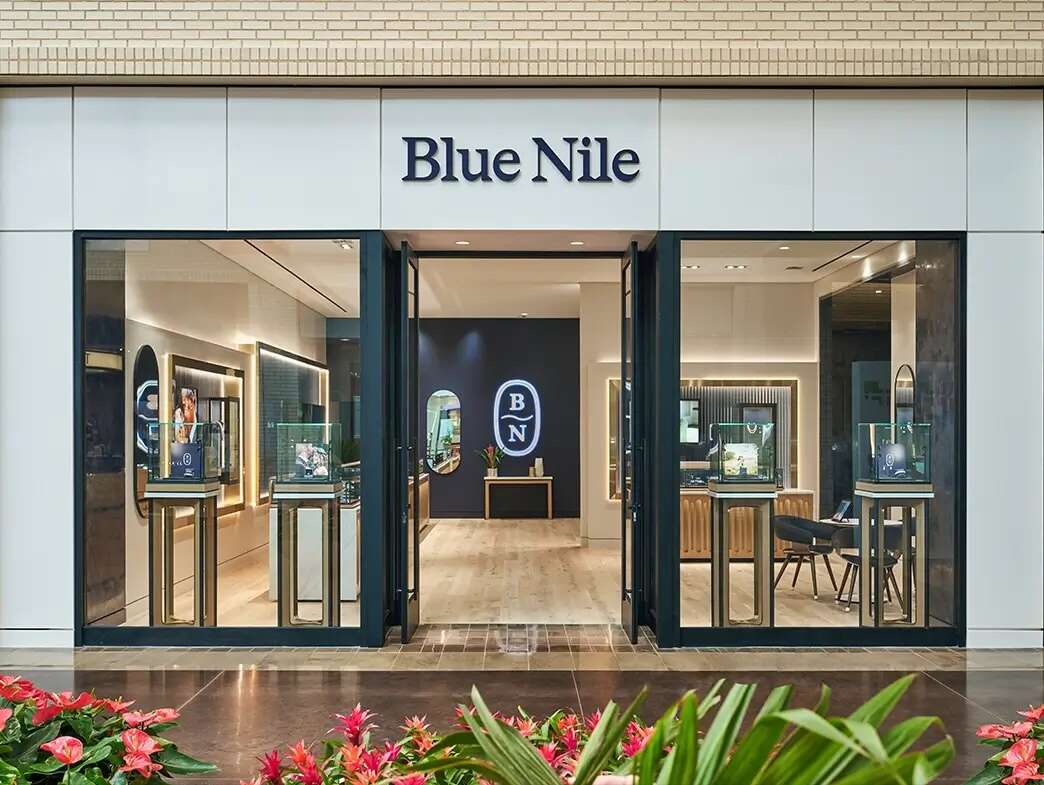
Image via Blue Nile
Rob Bates, the News Director at JCK, has written two exceptional articles detailing how the current impact of Lab Grown Diamonds reminds him of the shifts driven by Blue Nile in the early days of ecommerce.
While there’s a lot to learn from the similarities, it’s equally important to consider the differences.
Majority vs. Minority
Blue Nile had a clear impact on the way nearly every jeweler sells a diamond engagement ring, but it did not have the same impact on where those rings were actually sold. Exact numbers are hard to come by, but it’s now two and a half decades after Blue Nile’s founding, and most research shows that our industry has only recently broken the double-digit barrier for online sales (although this shift appears to be escalating quickly as traditional jewelry brands and retailers enhance their ecommerce expertise).
With Lab Grown Diamonds, the shift has come far faster than anyone anticipated (or even feared). In 2023, Lab Grown Diamonds accounted for an estimated 46% of engagement ring center stones. We are yet to have any concrete numbers for 2024, but it’s widely accepted that we are well past the 50% tipping point with little sign of slowing.
Blue Nile certainly impacted the industry, but in less than ten years, Lab Grown Diamonds have permanently changed a category that went unchallenged for nearly 100 years.
Inside vs. Outside
Where Blue Nile was an industry outsider’s attempt to take market share away from traditional jewelry retailers, lab grown jewelry is an industry-driven change. As gem-quality Lab Grown Diamonds became commercially available, jewelers ranging from Helzberg to De Beers helped drive the initial embrace of this new fine jewelry offering. Today, as fine jewelry retailers like Helzberg continue to lean in, luxury brands like De Beers are looking for the exit (and perhaps a time machine).
Many of the leading Lab Grown Diamonds retailers are now owned or were started by existing industry leaders. Grown Brilliance, which now owns Clean Origin and Aether Diamonds, was originally spun out of Unique Designs. Lightbox came from De Beers. With Clarity is now owned by Renaissance Global Limited, who also recently took a meaningful stake in Jean Dousset.
Blue Nile was something that happened to the jewelry industry. It’s yet to be determined if it’s for better or for worse, but Lab Grown Diamonds are something we did to ourselves.
Company vs. Category
The challenge with the comparison Rob is making is that Blue Nile is a company and Lab Grown Diamonds are a category. And this key difference is the most significant opportunity of all. When talking about ecommerce and jewelry, one can’t help but think of Blue Nile. When considering lab grown diamonds and jewelry, no clear leader comes to mind.
De Beers likely had the best chance with Lightbox. Still, their reluctance (if not outright refusal) to embrace Lab Grown Diamonds for engagement led to an uncompelling narrative that “Natural Diamonds are Forever” rather than helping the industry (and the world) embrace the possibility that “All Diamonds are Forever.”
Blue Nile created an alternative experience that resonated with jewelry buyers and accelerated the category of ecommerce for our industry. Despite signs of success, we’ve yet to see a company define the category and emerge as the Blue Nile of Lab Grown Diamonds.
Much as the early days of ecommerce showed clear promise for jewelers, it was Blue Nile that showed the way forward. Nerve-wracking as it can feel with all of the industry infighting and near-term challenges, it’s clear that the Lab Grown Diamond category shows even greater potential. We just need the right company to come and lead the way.